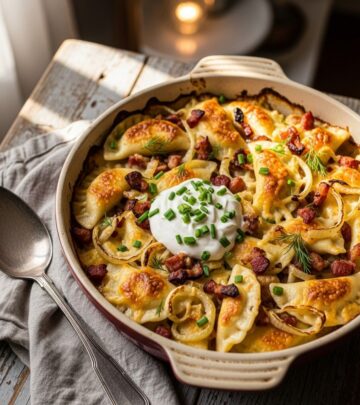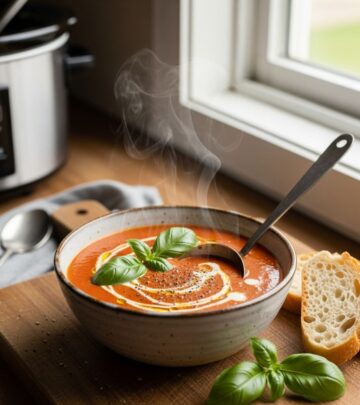Old-Fashioned Sweet Nine-Day Pickles: The Classic Homemade Recipe
Master the art of traditional pickling with this detailed guide to making old-fashioned sweet nine-day pickles at home, step by step.

Old-Fashioned Sweet Nine-Day Pickles
Few recipes encapsulate the comfort and nostalgia of traditional home preserving quite like old-fashioned sweet nine-day pickles. Rooted in generations of family kitchens, these pickles offer a crunchy sweetness layered with spices, making them a beloved complement to sandwiches, burgers, or as a snack straight from the jar. This guide will walk you through every stage of the process, from selecting cucumbers to canning your finished pickles, ensuring you recreate the distinct flavor and texture of these cherished pickles in your own home.
Table of Contents
- Ingredients & Equipment
- Step-by-Step Nine-Day Pickle Process
- Canning & Finishing Touches
- Storage, Shelf Life & Serving Suggestions
- Variations, Tips & Troubleshooting
- Nutritional Information
- Frequently Asked Questions (FAQs)
Ingredients & Equipment
To start your journey to the perfect sweet nine-day pickles, gather the freshest ingredients and appropriate kitchen tools.
Ingredients
- 10 lbs pickling cucumbers (washed, ends trimmed, sliced into 1/2 to 1-inch rounds or chunks)
- 2 cups pickling salt (do not substitute with regular iodized salt)
- Boiling water (to cover cucumbers during soaking and brining stages)
- 10 cups white distilled vinegar (ensure it is at least 5% acidity for safe pickling)
- 12 cups granulated sugar
- 2 tablespoons pickling spice (whole, or make your own blend with mustard seed, coriander, clove, etc.)
Optional Aromatics & Add-ins
- Whole cloves
- Cinnamon sticks
- Garlic cloves
- Powdered alum (as a firming agent, use with caution)
Equipment
- Large food-grade stone crock, glass bowl, or stainless steel container
- Plate, food-safe weight, or jar (to keep cucumbers submerged in brine)
- Cheesecloth (or a clean tea towel) and rubber band (for covering)
- Large saucepan or Dutch oven
- Slotted spoon or colander
- Measuring cups and spoons
- 10 pint-sized canning jars (with lids and rings), or equivalent quart jars
- Hot water bath canner
- Jar lifter, canning funnel, and bubble remover (optional but helpful)
Step-by-Step Nine-Day Pickle Process
The “nine-day” in the recipe’s name pays homage to the methodical, time-intensive process that develops these pickles’ unmistakable flavor and crunch. This timeline ensures thorough brining, sweetening, and seasoning.
Day 1-3: Salt Soak
- Prepare the cucumbers: Wash thoroughly, remove blossom ends, and slice into 1/2 to 1-inch rounds or chunks. If desired, add a few pieces of cauliflower for mixed pickles.
- Layering: Arrange cucumber slices in your crock or container, sprinkling with pickling salt as you go.
- Soak: Pour boiling water over the cucumbers until fully submerged. Place a plate or food-grade weight over cucumbers to keep them below the brine. Cover with cheesecloth or a tea towel to protect from dust and flies.
- Let stand for three days at room temperature.
Day 4 & 5: Fresh Water Soak
- Drain the salty brine. Discard the brine, rinse cucumbers thoroughly.
- Re-cover: Add fresh boiling water, submerge using the plate and weight, replace the cheesecloth, and let stand for 24 hours.
- Repeat on Day 5: Drain, refill with fresh boiling water, weight, cover, and soak another 24 hours.
Day 6: Spice & Vinegar Brine
- Drain the cucumbers. Set aside.
- Prepare the brine: In a saucepan, combine 10 cups vinegar, 6 cups sugar, and pickling spices. Bring just to a boil, stirring to dissolve sugar fully.
- Pour hot brine over cucumbers in the crock, cover with plate/weight and cheesecloth. Let stand 24 hours.
Days 7 & 8: Daily Re-Boiling Brine
- Each morning: Drain brine from cucumbers into a saucepan. Add 3 more cups sugar each day, bring the brine to a boil.
- Pour boiling brine back over cucumbers, replace weight and cover, and let stand another 24 hours.
- Repeat this process both days, each time adding 3 more cups sugar before boiling.
Day 9: Packing & Canning
- Final brine boil: Drain brine again and bring to a final boil in a large saucepan.
- Pack cucumbers into hot, sterilized canning jars, leaving about 1/2 inch headspace.
- Pour hot brine over cucumbers in jars to cover, remove air bubbles, and check liquid levels.
- Seal jars: Wipe rims clean. Apply lids and screw bands until fingertip-tight.
Canning & Finishing Touches
To ensure safety and storage longevity, a hot water bath canner is used for processing the packed jars.
- Process in a hot water bath: 10 minutes for pint jars, 15 minutes for quarts. Adjust by adding time for higher altitudes if needed.
- Cooling: Let jars cool undisturbed. Listen for the signature ‘pop’ indicating jars have sealed.
- Rest & develop flavor: For best flavor and texture, let pickles cure for 2-3 weeks before opening.
Altitude Adjustments (Important!)
If you live over 1,000 feet above sea level, consult trusted canning charts or your local extension office for recommended adjustments to processing times.
Storage, Shelf Life & Serving Suggestions
- Storage: Keep the sealed jars in a cool, dark place. After opening, refrigerate and consume within 1-2 months.
- Shelf life: Properly processed pickles can be stored unopened for up to 1 year.
- Serving ideas: As a side for grilled meats, diced in salads, with sandwiches, or as part of a charcuterie board.
Variations, Tips & Troubleshooting
Variations
- Spice it up: Add more hot pepper flakes or slices for a sweet-hot pickle.
- Mixed pickles: Swap out some cucumbers for cauliflower, carrots, pearl onions, or green beans for a festive jar.
- Alum for crispness: Some recipes call for a small amount of alum in the brine to help keep pickles snappy, but modern recipes often omit it.
Essential Tips
- Keep cucumbers submerged: Always use a clean, food-safe weight or plate to prevent mold development and ensure even contact with brine.
- Sanitation: Sterilize jars and tools before use. Wipe up any brine spills and handle jars carefully.
- Non-reactive containers only: Use glass, food-grade plastic, stainless steel, or enameled pots only. Avoid aluminum or chipped enameled wares.
- Wait before tasting: Allow the pickles at least 2-3 weeks after canning for flavors to fully mature.
Troubleshooting
- Soft or slippery pickles? May result from overripe cucumbers, insufficient salt, or improper sterilization. Always check for freshness and cleanliness.
- Cloudy brine? Can occur naturally with some spices, but cloudiness combined with off-odors may signal spoilage—when in doubt, throw it out.
Nutritional Information
| Nutrient | Approximate Amount (per 1 cup serving) |
|---|---|
| Calories | ~175 kcal |
| Total Fat | 0 g |
| Cholesterol | 0 mg |
| Sodium | 6290 mg |
| Total Carbohydrate | 45 g |
| Dietary Fiber | 0.1 g |
| Sugars | 44 g |
| Protein | 0 g |
Note: Values are estimated and will vary depending on ingredient brands, sizes, and exact recipe used.
Frequently Asked Questions (FAQs)
Q: Why does the process take nine days?
A: The multi-day process allows for gradual salt removal, brining, and sweetening. Each soaking stage draws out moisture, firms the pickles, and layers in flavor and texture that cannot be rushed.
Q: Can I shorten the process?
A: For truly old-fashioned results—texture, taste, shelf-life—it’s important to follow the nine-day process. Shortcuts may result in softer or less flavorful pickles.
Q: Is alum necessary?
A: Alum was traditionally used to keep pickles crisp, but current research suggests a properly salty brine and fresh, firm cucumbers are more effective. Alum can be omitted for most modern home canners.
Q: How can I tell if my pickles are safely preserved?
A: Check that all jar lids are sealed before storing. The brine should remain clear (some cloudiness from spices is normal), and pickles should smell fresh. Discard any jars with off odors, molds, or mushy texture.
Q: Can the recipe be halved or doubled?
A: Yes! Adjust all ingredients proportionally, but maintain the same soaking and canning times. Be sure the container you use allows for full submersion of cucumbers throughout each stage.
Final Notes: Preserving Tradition
Crafting old-fashioned sweet nine-day pickles is more than a recipe—it’s a time-honored tradition. Whether you enjoy these as an annual ritual or a new culinary adventure, each jar captures the flavors of the past and preserves them for future memories.
Read full bio of Sneha Tete












